“The first day started off with a great commencement speech which sparked an interest within me regarding this issue. The next two days - first, packed with new places to discover; and the second, jam-packed with sessions - proved to be great. Visiting two churches and around four mandirs, I realised how similar our religions are. It taught me to challenge prejudices and discover commonalities; it taught me to break all past notions about the differences in our religions. The third day enlightened me with archival data we’ve forgotten to acknowledge and made me think in a completely new tangent and from a complete different perspective. Overall, an amazing event! I’m so glad I attended.”
- Dua Rashid, a participant
“The experience with T.I.M.E. was unlike any I have had before. It gave me a chance to explore my surroundings and, most importantly, myself. The sessions with Rahma, Rimsha, and Shaheryar were very helpful during the Photowalk with HOP. However, what really stood out during these three days was the workshop we had with Danial. He intimated us with all of his major experiences, inculcating in us a desire to pursue Travel Journalism ourselves. The efforts by the IBA media society, especially Wafa and Sudesh, were visible in this amazingly coordinated inaugral event.
- Mehreen Hassan, a participant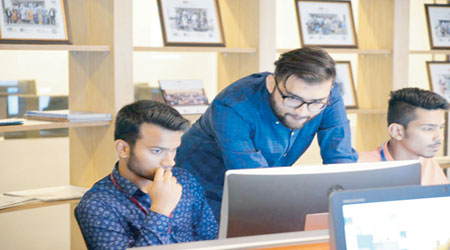
What happens when you are thrown together with a group of students whom you don’t know for three whole days to learn, explore, and practice what you learnt? You talk, you begin to note commonalities between yourself and other(s), you share some more, and you discover you weren’t such a know-it-all, after all. As a student, as a journalist, as an organiser, there’s still a thousand different things - each unique and worth your time - that you weren’t aware of before and wouldn’t be still had not a colleague, a friend, brought them to your attention. The Ingenious Media Exposition (T.I.M.E), arranged by IBA-ians, was an extremely fun-filled three-day workshop-conference. With the swift advancement that media around the world is experiencing, the more a media student knows of the latest, innovative multimedia techniques used within the industry, the better equipped he or she is to collect stories and create content for publication/circulation, especially if this entails travel journalism.
But then what is the difference between idle talk and compelling story? What are the tools that can assist you in this matter? And, last but not the least, how is it that you define travel journalism? All this was part of the first day.
Day one
Amidst everything that he talked about in his key note speech, Ali Haider (Editor-in-Chief, Humans of Pakistan) told a beautiful story of a fundraiser they had managed quite successfully. The reason, he said, was because “they trusted us ... because of the story and all the verifications...” A story sometimes takes one out of their comfort zone; it’s not necessary for everyone to have, for instance, gone through forced marriage or rape and once they realise it, it’s easy for them to empathise with the victim’s struggle to overcome challenges. But then, like he acknowledged overtly, this nation in particular is the most generous, caring, and loving nation of the world in contrast to what recipients of digital media get to see mostly.
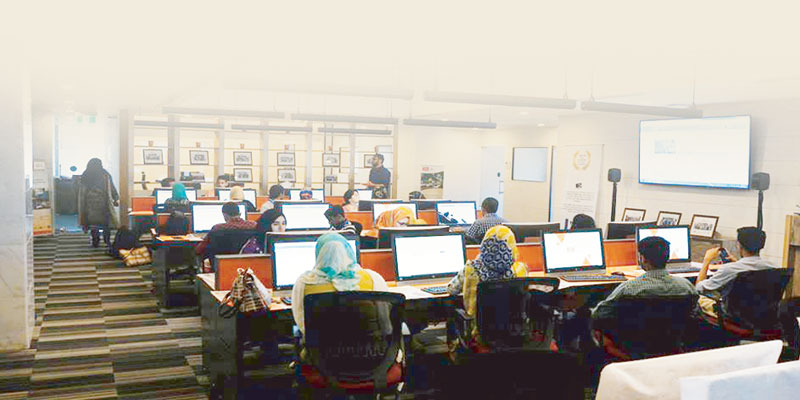
His documentary, Tharparker - a visual montage, left us enthralled. While Ali didn’t spill any beans on the technicalities of the mediums used for the project, little did he know that there were experts like Shaheryar Popalzai, a digital journalist, and Rimsha Ali Shah, a communications specialist to fill that hole with online tools in this first edition of T.I.M.E. Shaheryar’s tips and tricks consisted of what he had learned beyond the school walls. Since T.I.M.E., a Desklers’ sponsored event, had planned a photo walk with HOP and The Citizens Archive of Pakistan (CAP), he spoke at length about techniques like mapping and apps and sites like latlong.net, cartodb.com, and Periscope to convert dull topics into something pursuable by an average reader. His objective was simple. Why should you sit out on a great experience when you can learn how to design, shoot video, and make packages on your own? As long as you know what you want, there are a handful of free tool you can use to enrich your storytelling and enjoy an edge over your competitors. A little help goes a long way and I am sure the participants who left the room were no more clueless about organising their data for a presentable look. They became actually prepared to capture stories and tell them in a brand new way!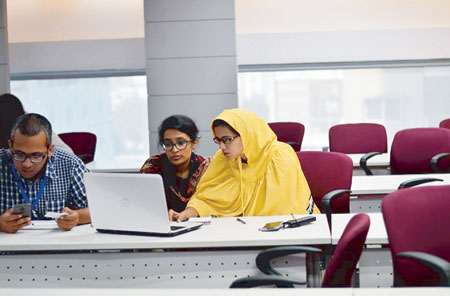
Rimsha’s ‘social media for penny-pinchers’ was more about different methods to share a story. You can, obviously, pen it for one. But then you can also write a blog, make a video, record a podcast, go graphic all the way given your audience’s short attention span and an inclination towards more visuals. With the likes of canva.com, VivaVideo, and piktochart.com, you can be your own professional designer, making appealing products and taking your traffic to the next level. Oh, the things that you do for the love of journalism!
Rahma Muhammad Mian, a media professional who has worked in both print as well as broadcast journalism, examined the fine line between telling compelling stories and us talking in “the art of storytelling”: that of structure. A structure, that is a beginning, a middle, and an end, rigidly bound by a point and a cause-and-effect relationship instead of being in a random order and/or not serving any purpose, is what makes any series of events a story. This is irrespective of the length of the narrative; further, it also doesn’t matter if you are using newspapers as a medium or magazines or TV channels, not even its category as a fiction or a non-fiction. As long as these elements are met, you have a story in your hand, ready to deliver to your desired audience.
It seems quite obvious, right? And you’d be wondering why they had ‘wasted’ their time instructing university grads about something this ‘obvious’. Thing is, we don’t see it being implemented much. As a generation who is too tech-savvy for its own good, we have a knack of ignoring these important points when using social media to tell our stories. Tell me, for instance, if you mulled over even for a second on who your audience is and what platform(s) will cater best to your needs of writing for them? Ranting is easy. But when you are using social media to share your experiences in real time, then here’s one thing you can do. Be smart. And question yourself whether yours is a massive audience or a niche; what your primary platform is going to be to connect to them. Facebook, for instance, is great if you are looking toward interactions and one-on-one feedback. However, with more than 50 percent of its users signing in from mobile for entertainment, inspiration, and education, it’s your job to optimise your stuff for them; factor in visual posts, relevant hashtags, and good call-to-actions to reach a bigger audience. The same goes for the easily accessible Twitter or the mobile-only Instagram, both of which are awesome for journalism, allowing you to tell interesting visual stories with each post and start a conversation.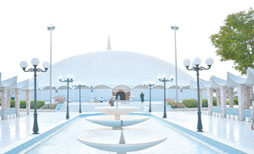
And if it’s stories you are looking for in the first place, you are probably going in with a wrong attitude. Curiosity is not piqued with an “I know everything” stance. Go and put yourself in their shoes to begin with. Rahma also gave tips on how to interview and how to write while tackling the biggest question of readers - “why should I care”. She also emphasised that “just because it’s not ‘fiction’” is no excuse for you to stop paying attention to the kind of language and grammar you use on social media. Being responsible and doing justice to person you’re interviewing and yourself entail you do your job ethically and use facts (verified and proofread) instead of creating false information.
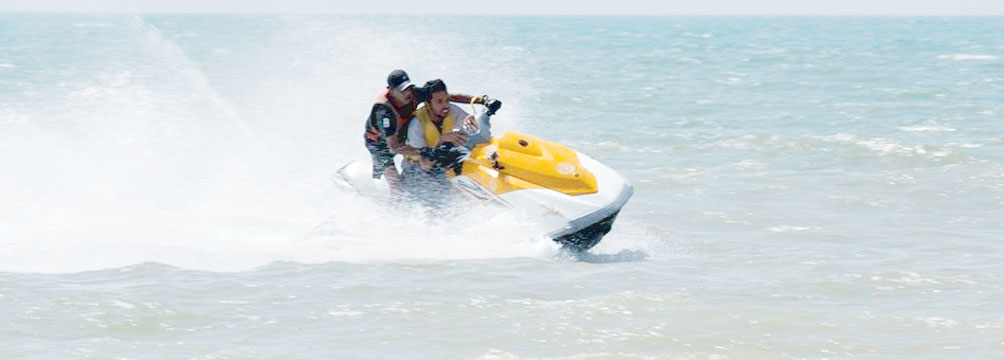
Which brings us again to what it is you want to do? Danial Shah’s session after lunch break addressed this concern. (To those who don’t know him, Danial is a freelance documentary and travel photographer and writer.) “[Travel journalism is] narrating stories about places you travel,” said one participant. “It’s not confined to a particular place,” said another. He clicked the wireless presenter and there it was for everyone to see: travel journalism subdivided into geography, culture (language, traditions, and food), people, and history/present; basically, information which, when combined, gives you stories.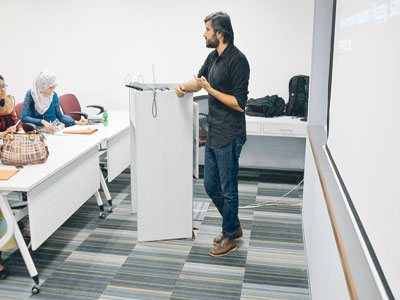
Himself inspired by the research-based Nat Geo, in particular by Steve McCurry, Salman Rashid, and Prof. Ahmad Hasan Dani, his next stress was on why we need this subject or the stories therein told? Tourism is one thing; acceptance of diversity of the country is second; visiting places most people don’t go to, understanding other areas and getting to know more about yourself and the world around you is another. The latter is the most important. Like Danial put it succinctly, “You don’t say you’re a proud Pakistani because you read about it in some book; you’d say it because you feel it.” It’s not about the facts that you can read up in any history/geography book.
That said, the next part of his presentation was about fears we would have if we ever decide to be travel journalists. Security, language concerns, acceptance, getting lost, and becoming broke. He discussed what he had grasped from his adventurous ventures in the country or, in other words, what was there for us to explore if we ignore the ‘unreal’ fears discouraging us and step out. While showing snippets from his own travelogues, honestly admitting that at times it will be beautiful and at other times you’ll only be seeing harsh realities, his instructions for a travel story were clear and simple. Make a list of things that you are comfortable with and get rid of it. Then pick any place that you want and can travel to, choose the important highlights of the trip, and use your five senses to record your experiences and emotions throughout the journey. The questions at the end of the session were about how to overcome obstacles like frustration now and then and your family’s disapproval of travel journalism both as a hobby and as a profession.
Day two
You know what I practically love about the whole profession? That it is not controlled by any one medium or religious boundary. The stories might be similar, the experiences of those individuals not so much. Having started with a bang, the travel itinerary planned for this day gave us a taste of the same, a way to get to understand and be more emotionally attached to this city we live in. It was a chance for us to put our new skills to test as we walked past gates of St. Lawrence’s Church, the Sri Swami Narayan Mandir, the Eduljee Dinshaw Road, Narayanpura, and Tooba Masjid.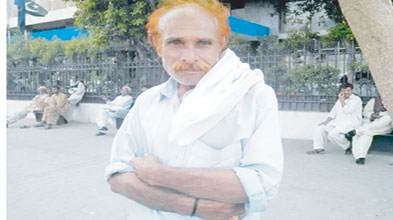
Each of these places of worship are not only important landmarks of the cityscape, but home to hordes of interesting people, some even as old as the city since partition itself!
Day three
“Everything I’ve ever done, ever thought, ever experienced, and ever felt, has led me up to this moment in my life.” - Jarod Kintz
That’s it, after the socializing events (cruise and jet skiing), it was time for the meaty part of the programme: panel discussion on “the use of new media in archiving the cultural heritage of Karachi”. Moderated by Dr. Naveen Zehra Minai, the list of panellists included Fahim Zaman Khan (a social activist and former administrator of Karachi Municipal Corporation), Dr. Tiago Ferreira Lopes (Cross-Cultural Ambassador of the UNESCO Club at Sorbonne University), Heba Hashmi (Coordinator at the Aga Khan Cultural Service Pakistan), and Mohsin Tejani (Founder and Executive Director The School of Writing).
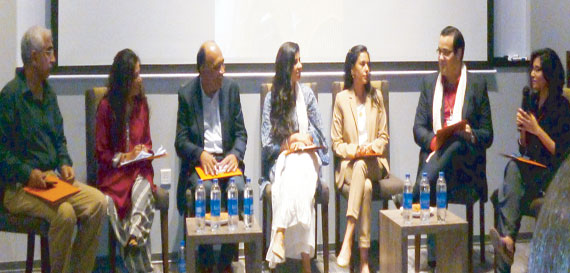
The “very exciting conversation” started off with the typical problems that they have faced in doing archival work in Karachi. One of the major issues is working in the urban context itself; Karachi is layered with history and different cultural groups who all have their own set of values which makes bringing everyone in the team on the same page a staggering task. But as the veterans took turns explaining, the biggest challenge to date is perhaps of who to learn the art from because there is no industry standard. Call it lack of industry or lack of awareness on part of the public, it is apparent that hiring an archivist is a feat next to impossible. And in finding solutions for it, in utilizing ‘new’ media - new being a relative term - to create possibilities or cultivate the building of archives, it’s important that you identify what it is you want to archive. Also, will you believe it what they all agreed to as fundamental when you go out and archive, that is once you have decided what needs to be archived? “Curiosity”.
The writer is a member of the staff and can be reached at shermeenzuberi@hotmail.com